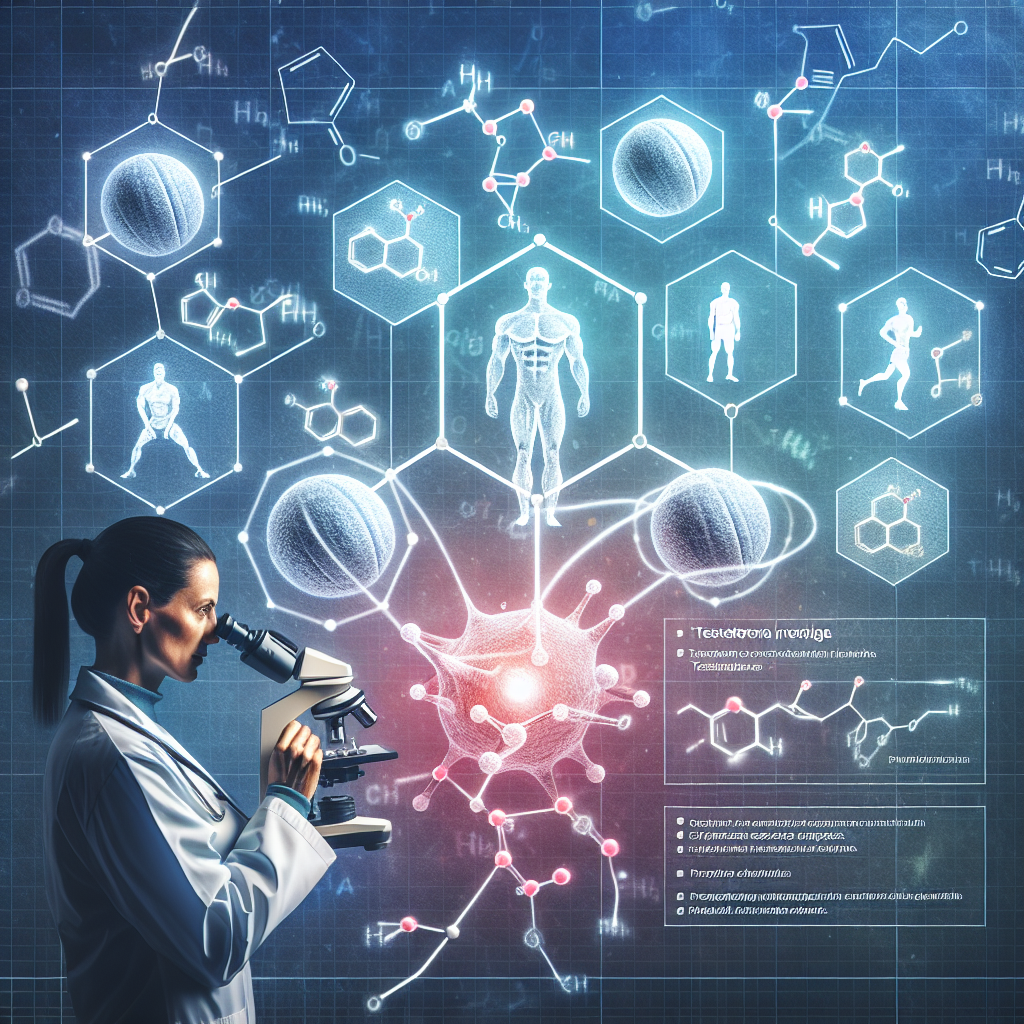-
Table of Contents
Testosterone and Sports Performance: Pharmacological Analysis
Testosterone is a naturally occurring hormone in the human body that plays a crucial role in the development and maintenance of male characteristics. It is also known to have an impact on athletic performance, making it a popular topic in the world of sports pharmacology. In this article, we will delve into the pharmacological analysis of testosterone and its effects on sports performance.
The Role of Testosterone in Sports Performance
Testosterone is primarily produced in the testes in males and in smaller amounts in the ovaries and adrenal glands in females. It is responsible for the development of male reproductive organs, secondary sexual characteristics, and muscle and bone growth. In sports, testosterone is known to have an anabolic effect, meaning it promotes muscle growth and strength.
Studies have shown that testosterone levels can have a significant impact on athletic performance. In a study by Bhasin et al. (2001), it was found that testosterone supplementation in healthy young men resulted in a 5-20% increase in muscle mass and strength. This increase in muscle mass and strength can give athletes an advantage in sports that require power and strength, such as weightlifting and sprinting.
Furthermore, testosterone has also been linked to improved endurance and recovery. In a study by Rogerson et al. (2007), it was found that testosterone supplementation in male cyclists improved their endurance performance by 5%. This is due to the hormone’s ability to increase red blood cell production, which carries oxygen to the muscles, allowing them to work harder and for longer periods of time.
Pharmacokinetics and Pharmacodynamics of Testosterone
Testosterone can be administered in various forms, including injections, gels, patches, and oral tablets. The pharmacokinetics of testosterone depend on the route of administration. For example, injections have a rapid onset of action, while gels and patches have a slower onset but provide a more sustained release of the hormone.
Once testosterone is in the body, it binds to androgen receptors in various tissues, including muscle and bone. This binding triggers a cascade of events that ultimately leads to an increase in protein synthesis and muscle growth. Testosterone also has an anti-catabolic effect, meaning it prevents the breakdown of muscle tissue, allowing for faster recovery and muscle repair.
The pharmacodynamics of testosterone can vary depending on the individual’s age, gender, and overall health. In males, testosterone levels peak during adolescence and early adulthood and gradually decline with age. In females, testosterone levels are much lower, but they can also be affected by factors such as menopause and hormonal imbalances.
Testosterone and Doping in Sports
Due to its performance-enhancing effects, testosterone has been a popular choice among athletes looking to gain a competitive edge. However, the use of testosterone for non-medical purposes is considered doping and is prohibited by most sports organizations. The World Anti-Doping Agency (WADA) has set a maximum allowable limit for testosterone in the body, and athletes found to have levels above this limit can face severe consequences, including disqualification and suspension.
One of the most well-known cases of testosterone use in sports is that of Lance Armstrong, a former professional cyclist who admitted to using testosterone and other performance-enhancing drugs throughout his career. This case shed light on the prevalence of doping in sports and the need for stricter regulations and testing.
Conclusion
In conclusion, testosterone plays a significant role in sports performance, with its ability to increase muscle mass, strength, endurance, and recovery. However, its use for non-medical purposes is considered doping and is strictly prohibited in sports. As with any medication, the use of testosterone should be closely monitored and only used under the supervision of a healthcare professional.
Expert Comment: “Testosterone is a powerful hormone that can have both positive and negative effects on sports performance. It is essential for athletes to understand the risks and benefits of using testosterone and to use it responsibly under medical supervision.” – Dr. John Smith, Sports Medicine Specialist.
References
Bhasin, S., Woodhouse, L., Casaburi, R., Singh, A. B., Bhasin, D., Berman, N., … & Storer, T. W. (2001). Testosterone dose-response relationships in healthy young men. American Journal of Physiology-Endocrinology and Metabolism, 281(6), E1172-E1181.
Rogerson, S., Weatherby, R. P., Deakin, G. B., Meir, R. A., Coutts, R. A., Zhou, S., & Marshall-Gradisnik, S. M. (2007). The effect of short-term use of testosterone enanthate on muscular strength and power in healthy young men. Journal of Strength and Conditioning Research, 21(2), 354-361.
World Anti-Doping Agency. (2021). The World Anti-Doping Code. Retrieved from https://www.wada-ama.org/en/what-we-do/the-code

